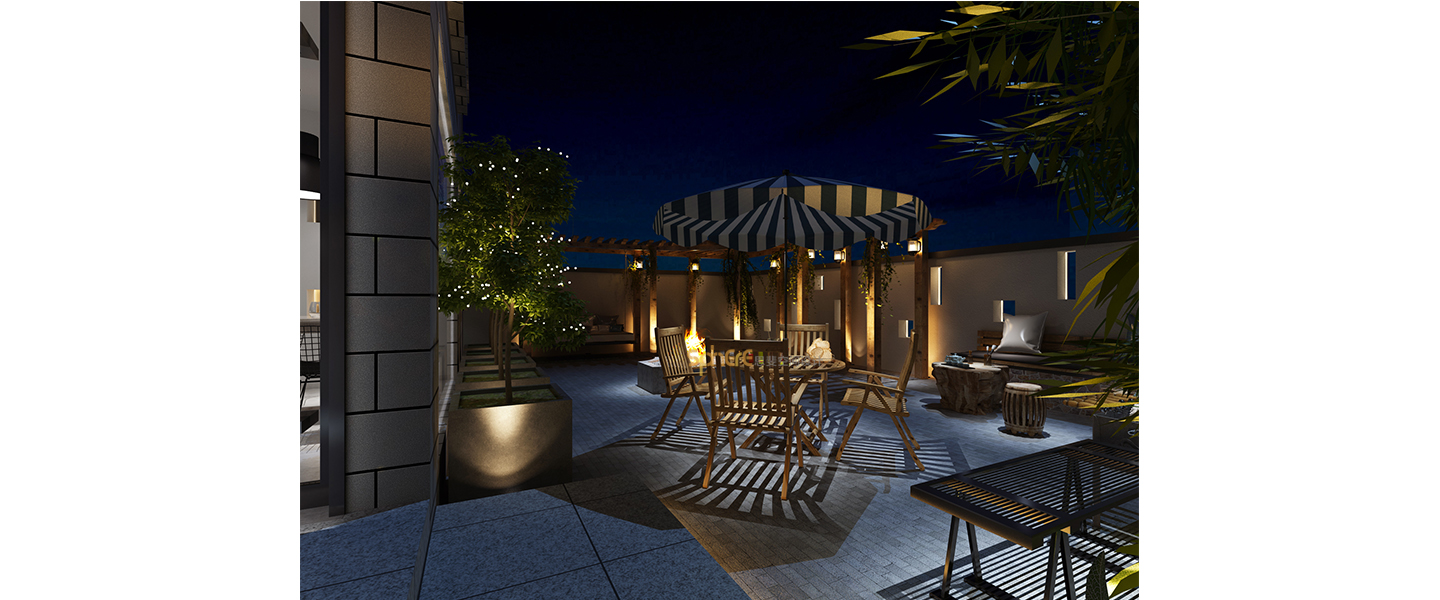Fellows Pavilion
2014-12-30 01:00
© Simon Menges
C.Simon Menges


架构师提供的文本描述。由理查德·霍尔布鲁克(Richard C.Holbrooke)、亨利·A·基辛格(Henry A.Kissinger)和理查德·冯·魏茨克(Richard Von Weizs Cker)于1994年在柏林成立的美国学院(American Academy)是为美国学者、作家、政策制定者和艺术家提供住宿奖学金的重要和不断增长的中心,其中包括校友阿瑟·米勒(Arthur Miller)、乔纳森·弗兰森(Jonathan Franzen)、詹妮·霍尔泽(学院坐落在汉斯·阿恩霍尔德中心,这是一座风景如画的19世纪别墅,坐落在万西的一大片土地上。
Text description provided by the architects. The American Academy in Berlin, founded in 1994 by Richard C. Holbrooke, Henry A. Kissinger, and Richard von Weizsäcker, is a vital and growing center for residential fellowships for American scholars, writers, policymakers, and artists, among them alumni Arthur Miller, Jonathan Franzen, Jenny Holzer, Jeffrey Eugenides, Hal Foster, and Jonathan Safran Foer. The Academy is housed in the Hans Arnhold Center, a picturesque 19th-century villa on a large parcel of land directly on the Wannsee.
© Stefan Müller
斯特凡·穆勒


学院项目的成功导致了可用空间的匮乏,因此开始了花园展馆的计划,以便为常驻研究员提供更多的学习空间。废弃的浴室位于学院宽阔的院落左侧,坐落在一堵旧砖墙旁,提供了理想的场所。一个现存的雕塑由Georg Kolbe,“Verkündigung”(1937年),手势这个新的展馆,回忆科尔贝的“德尔摩根”(1925年)在密斯范德鲁的巴塞罗那馆。
The success of the Academy’s program has led to a dearth of available space, so plans for a garden pavilion were initiated to provide more study space for resident fellows. A disused bathhouse, located on the left side of the Academy’s expansive yard and nestled along an old masonry wall, provided the ideal site. An existing sculpture by Georg Kolbe, “Verkündigung” (1937), gestures to this new pavilion, recalling Kolbe‘s “Der Morgen” (1925) at Mies van der Rohe‘s Barcelona Pavilion.
© Stefan Müller
斯特凡·穆勒


巴科夫·莱宾格(Barkow Leibinger)设想了一种轻巧的玻璃和钢结构,让人想起了早期的实践原型-比如2012年马拉喀什双年展(Marrakesh Biennale)的“织机双曲线”装置,以及20世纪展馆的历史。在七个书房和一个小厨房的封闭空间的中心是一个钢梁的屋顶,形成一个双曲的表面,似乎漂浮在较低的空间。
Reminiscent of earlier practice prototypes—such as the “Loom Hyperbolic” installation at the 2012 Marrakesh Biennale—as well as the history of 20th century pavilions, Barkow Leibinger conceived a lightweight glass and steel structure. Central to the enclosed space of seven study carrels and a small kitchen is a roof of steel beams that forms a double-curved surface, which appears to float over the lower spaces.


展馆屋顶的形状是“直射几何学”的结果:偏移直线旋转产生四个双曲线抛物面,这是一个既抽象又熟悉的形状,因为它反映了历史别墅的尖顶屋顶,如果仅仅在海拔的话。展馆的独特之处在于它看起来像漂浮在花园的绿色草坪上,以及它的主导白色。LED照明,位于车顶墙壁,进一步强调了这种效果,在夜间照亮天花板,然后似乎漂浮在结构本身之上。
The form of the pavilion’s roof is a result of “ruled geometry”: offset straight lines rotated to produce four hyperbolic paraboloids, a shape that is both abstract and familiar, since it reflects, if only in elevation, the gabled roof of the historical villa. The distinctness of the pavilion is further enhanced by both its seeming to “float” above the garden’s green lawn, and its dominant white color. LED lighting, located at the top of the carrel walls, further emphasizes this effect at night by illuminating the ceiling, which appears then to float above the structure itself.
© Stefan Müller
斯特凡·穆勒


屋顶在拐角处由四根梁柱支撑,这些柱也是雨水的排水沟。橡木覆盖的钢平台稍高于地面,是外部和内部空间的主要表面。一个由滑动门和玻璃窗组成的玻璃窗位于大楼周边,在整个建筑周围形成了一个连续的门廊区域,从而增加了展馆内外的透明度。
The roof is supported at the corners by four I-beam columns, which also serve as rainwater drains. An oak-plank-clad steel platform sits slightly above the ground and is the primary surface for both exterior and interior spaces. A glass façade of sliding doors and glazing sits back from the building’s perimeter, which creates a continuous porch area around the entire structure and allows for increased transparency into and from the pavilion.
© Simon Menges
C.Simon Menges


在里面,7m2的书房空间被天花板隔开-高墙,由玻璃、橡木和钢铁构成。通过玻璃门通往内部走廊的单独空间,以及通过大玻璃滑动门进入花园的空间,这些门可能被窗帘关闭以保持隐私。每个办公室都配备了内置的金属架子、抽屉和一张桌子,辅之以维特拉提供的独立家具。三层玻璃,地板和墙壁加热,以及良好的绝缘地板和屋顶有助于节能结构。
Inside, the 7m2 study spaces are divided by ceiling-high walls, constructed of glass, oak, and steel. The individual spaces open to an internal corridor via glass doors, and into the garden area via large glass sliding-doors, which may be shuttered by curtains for privacy. Each office is outfitted with built-in metal shelves, drawers, and a desk, complemented by freestanding furniture from Vitra. The three-layer glazing, floor and wall heating, and well-insulated floors and roof contribute to the energy efficient structure.
Floor Plan


“展馆既不是建筑,也不是实验。它徘徊在投机和务实之间。对我们来说,这是一种挑衅性的工具(原型或样本),用来测试投机工作的局限性和能力。它为可能仍然潜在但不完整的工作提供了方向。一个展馆,在这里充当一个量规或过滤器,既使我们的研究合法化,又理解我们研究的价值。“
“A pavilion is neither a building nor exclusively an experiment. It hovers between the speculative and the pragmatic. For us, it is a provocative vehicle (prototype or sample) for testing the limits and capacities of speculative work. It gives direction to work that might remain latent but incomplete. A pavilion, here acts as a gauge or filter to both legitimize and understand the value of our research.”
© Simon Menges
C.Simon Menges






































Architects Barkow Leibinger
Location Berlin, Germany
Category Research Center
Project Architect Tobias Wenz
Area 85.0 sqm
Project Year 2015
Photographs Stefan Müller, Simon Menges
























